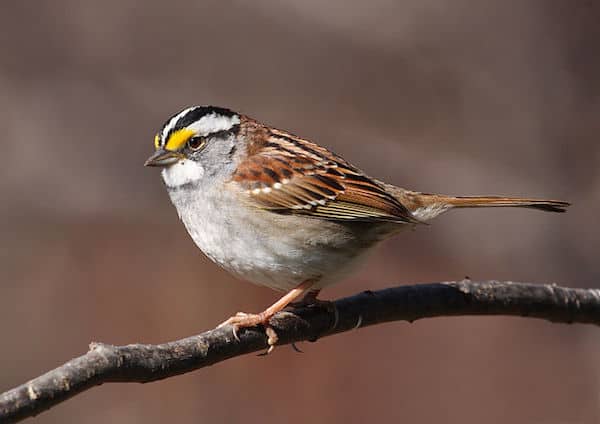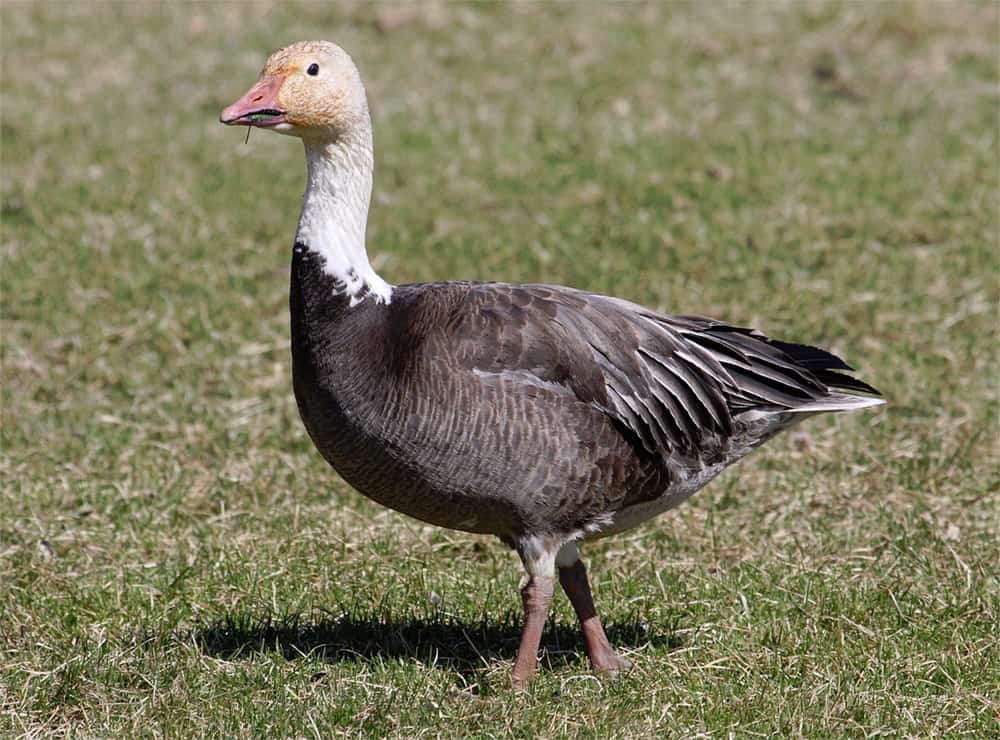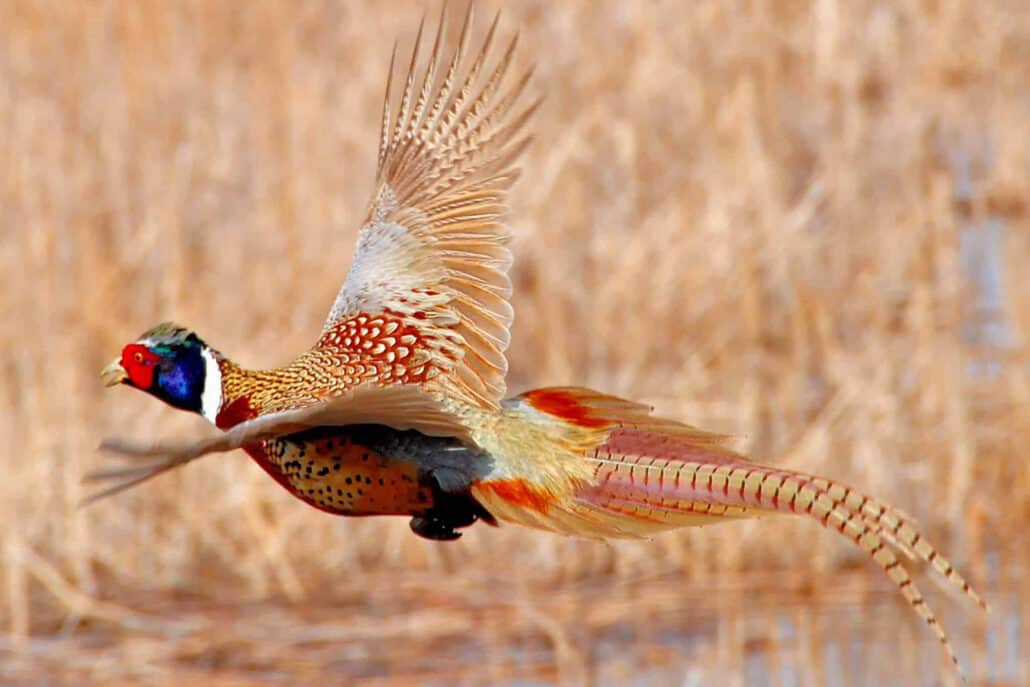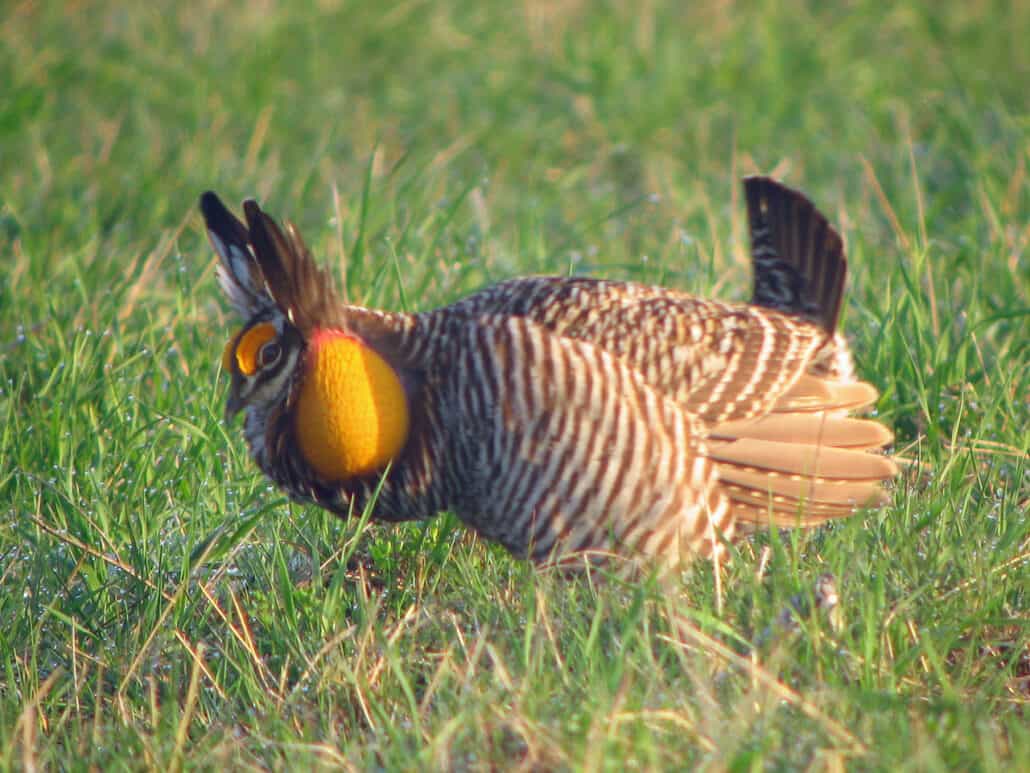Fall Birds of Iowa (September, October, November)
There are more birds in North America in fall than any other time of the year. Because the populations have swelled with the young hatched in nesting season, fall is the best time to see huge flocks of shorebirds, waterfowl, chimney swifts, swallows, and blackbirds.
In several ways birding is more of a challenge in fall than in spring. Most songbirds aren’t singing, or they’re singing very little, and many have already molted into their less colorful winter plumage (sometimes called basic plumage). Furthermore, for many species, the fall migration period is less concentrated and more spread out over a longer time than the spring’s show. Nevertheless, fall birding in Iowa is all about migration, and the birding can be very good indeed.
At Hitchcock Nature Center, overlooking the Missouri River in Pottawattamie County, hawk watchers tally more than 10,000 raptors of 20 species flying south along the river in a season. Hitchcock Center’s impressive list of annual sightings includes thousands of Swainson’s hawks, which are generally rare in Iowa but which fly past Hitchcock as they travel in the Missouri River Valley migration corridor. In the northeast corner of the state, at the annual fall raptor festival at Effigy Mounds National Monument, in Allamakee Co., one can watch hawk banding and other programs, as well see a stream of hawks, eagles, and falcons come down the Mississippi River Valley. There’s also good raptor watching at Grammer Grove, in Marshall County.
In fall birders also check out shorebird and waterfowl hotspots. The big reservoirs are all good both for shorebirds and waterfowl. Hawkeye Wildlife Area, near Iowa City, is sometimes thick with shorebirds, including plovers, sandpipers, dowitchers, dunlins, and phalaropes, with the Sand Point area often particularly productive. The 700-acre Colo Ponds Wetlands Complex, in Story County, gets all the Iowa shorebirds, with as many as 1,000 individual birds there at once.
In late fall, the Mississippi River often hosts flocks of tundra swans that number in the thousands at Pool 9, near Lansing, Iowa, in Allamakee County. Occasionally a few of the slightly larger trumpeter swans are among them. The entire Iowa stretch of the Mississippi River is good for waterfowl in autumn.
In towns, watch the evening skies for chimney swifts. After the birds have finished nesting, they forsake their individual chimneys and spend their nights in communal roosts of up to 5,000 swifts. As darkness falls, the swifts begin to circle the chimney, like a vortex. The flocks keeps getting bigger as distant swifts see the spiral of dark birds and come to join them. Birders, of course, can zero in on the target chimney, just as the birds can. Standing below a chimney swift chimney and looking up at the birds is an exhilarating, almost dizzying experience. All the while the swifts keep up a chittering that sounds like thousands of distant castanets. Then, just before darkness becomes too thick to see them any more, they all swirl down the chimney, like smoke in reverse, a process that takes only about five minutes. As the last of the birds disappear from sight, their chittering fades away. Each swift may spend two or three nights in one chimney before continuing its migration. The birds use the same communal chimneys year after year. The older birds remember from previous migrations where the chimneys are, and the young ones find them by following the adults.
Also in towns, you may encounter a flock of migrating common nighthawks. Sometimes hundreds can be seen in a loose flock. Enjoy them while you can. When you see nighthawks massing like that, they are already on their way south, and you might not see them in Iowa again until the following May.
Swallows also form big flocks as they get ready for fall migration. Since swallows, like swifts and nighthawks, live entirely on winged food they catch in midair, they can survive only in climates in which insects fly. When the weather turns cold, and insects no longer fly, it’s a survival issue for birds who live on them to move southward. In fall, one often finds power lines occupied by swallows. The birds crowd so close they almost touch one another. Congregations of swallows signal that migration is underway. Iowa has six species of swallows, all of which stage for migration in this way: tree swallows, bank swallows, cliff swallows, barn swallows, rough-winged swallows, and purple martins.
Common grackles form huge flocks in fall. People see dark clouds moving across the fields, turning as if with one impulse. The flocks string out as they come in to roost in trees in evening. For a while the trees are full of their harsh calls, until darkness silences the birds. The grackles are like a river, flowing south. As a flock proceeds on its migratory journey, other flocks join up with it. By the time the birds reach the southeastern United States, where they winter, there may be 30 million birds in a flock.
This is the season when a weedy field suddenly sprouts juncos and white-throated sparrows. Birds that have been present all summer in smaller numbers swell their numbers with migrants from points farther north, such as field sparrows, song sparrows by the hundreds, and the less abundant white-crowned sparrows, Lincoln’s sparrows, and Harris’s sparrows. In wetter fields, one may find the sought-after Le Conte’s and Nelson’s sharp-tailed sparrows.
Backyard Tip: If you haven’t been feeding birds through the summer, this is the time to start. Winter residents are setting up their winter feeding territories. Even though wild food is still abundant in early fall, and the birds may not spend much time at your feeders, they are noting where the good sources are. Then when snow flies or an ice storm hits, sealing away much of their naturally occurring food, they will know all about your backyard and will come to it. You’re already into the enjoyments of winter birding in Iowa.




